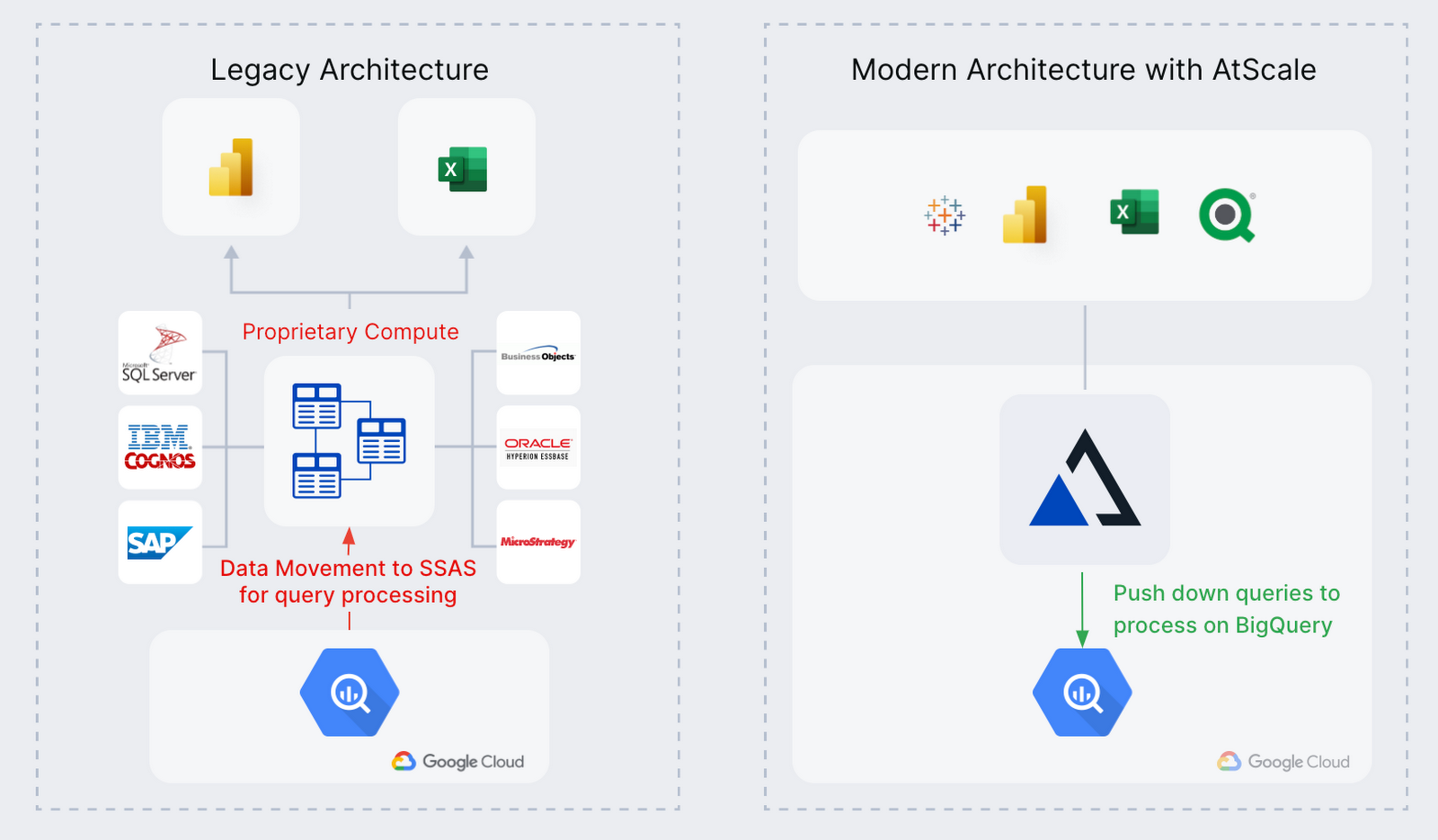Modernize legacy BI and OLAP workloads with AtScale and BigQuery
David Mariani
Founder and CTO, AtScale
Naveen Punjabi
Director, Analytics & AI Partnerships, Google Cloud
Online Analytical Processing (OLAP) is a technology used for data analysis and reporting within business intelligence (BI) systems. It allows users to analyze complex data from different perspectives, providing insights into business performance and trends. In the mid 1990s, OLAP platforms like Microsoft SQL Server Analysis Service (SSAS), Business Objects, Cognos, and Microstrategy all provided OLAP solutions that appealed to business users for their fast, “speed of thought” queries and their ability to provide a business-oriented analytics experience.
As more organizations migrate to the cloud, traditional OLAP technologies have failed to scale (operationally and with larger data volumes) and have become tough to govern since they create additional copies of data locked away in proprietary data silos. Enterprise data teams in every industry are challenged to modernize their analytics programs in a way that leverages the full potential of modern cloud data platforms. AtScale and Google worked with leading organizations like Tyson Foods, Cardinal Health and Bol.com to build highly scalable analytics solutions that deliver the analytics experience of OLAP while leveraging the scalability and elasticity of BigQuery.
Today, AtScale and BigQuery are tightly integrated, establishing an open analytics fabric that bridges raw data assets to speed-of-thought analytics experience on common BI platforms including Power BI, Excel, Tableau, Qlik, and Looker.
How AtScale + BigQuery changes the OLAP game
1. AtScale’s OLAP Engine goes beyond SQL to model your business
AtScale’s OLAP analytics goes beyond SQL, adopting a dimensional modeling paradigm that remains relevant in today’s cloud-first, big data world. Customers can model their business processes using a low-code design utility or a code-first approach, benefiting from various multidimensional, cell-based operators such as Previous, Next, Lead, Lag, Parallel Period, Ancestor, Parent, Descendants, Children, Siblings, Periods To Date, etc. This modernization path enables organizations invested in traditional OLAP-based BI programs to transition with minimal disruption for business users
2. AtScale delivers speed-of-thought queries without creating data silos
With AtScale and BigQuery, you don’t need to build physical cubes, create data extracts or import data into BI tools for optimal query performance. AtScale automatically tunes query performance using end-user query patterns by creating and managing aggregates stored in BigQuery. Data never leaves the BigQuery platform, simplifying security and governance while leveraging the massive scalability of the BigQuery engine.
3. AtScale works natively with a variety of BI and AI/ML tools
Microsoft Excel is arguably the most widely used BI tool on the planet. With AtScale and BigQuery, users can run live queries from Microsoft Excel on BigQuery without installing add-ins or additional client-side software. Besides support for Microsoft Excel (via MDX), AtScale provides the same integration with Power BI (via DAX), Tableau (via SQL), Qlik (via SQL), Looker (via LookML), and AI/ML tools (via Python). End users get native, live query support for their favorite tools with compromising functionality or performance.


How AtScale and BigQuery are redefining OLAP
The AtScale platform for BigQuery is available today. AtScale will work directly with your existing BigQuery data environment. You can get started with the AtScale platform by visiting our page in the Google Cloud Marketplace. To learn more about the joint AtScale and BigQuery solution, check out this technical overview document and our recent webinar, Modernizing Legacy OLAP & BI for High Performance Analytics to see it in action.

